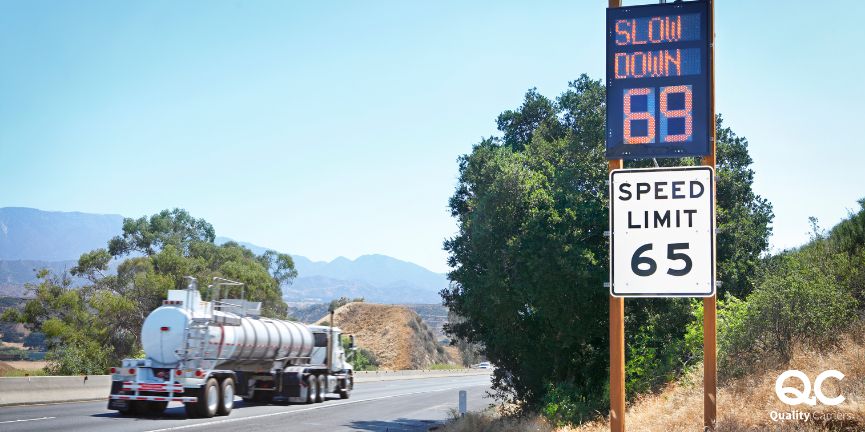In the transportation industry, truck drivers are the backbone. They ensure that goods are delivered efficiently across vast distances. Are you considering a career in truck driving or curious about the demands of truck driver jobs? One of the key questions is: how many miles does a truck driver typically drive in a year?
The Regulations on Trucking Hours
Understanding the mileage a truck driver covers annually requires knowledge of the regulations governing their working hours. The Federal Motor Carrier Safety Administration enforces Hours of Service (HOS) regulations to ensure drivers have adequate rest and operate safely.
What are HOS regulations?
Hours of Service (HOS) regulations are rules set by the Federal Motor Carrier Safety Administration (FMCSA) that govern the working hours of commercial truck drivers in the United States. These regulations ensure drivers get adequate rest, prevent fatigue, and enhance road safety for all motorists. Key HOS regulations include:
- 11-Hour Driving Limit: Drivers can drive 11 hours following 10 consecutive hours off duty.
- 14-Hour On-Duty Limit: Drivers cannot drive past the 14th consecutive hour after starting their duty, following a 10-hour off-duty period. This period includes all driving and non-driving work.
- 30-Minute Break: Drivers should take a 30-minute break after 8 cumulative hours of driving without at least a 30-minute interruption.
- 60/70-Hour Duty Limit: Drivers cannot drive after being on duty for 60 hours over 7 consecutive days or 70 hours over the 8 consecutive days. This limit can be reset by taking 34 consecutive hours off duty.
Factors Affecting Truck Drivers’ Mileage

Several factors influence how many miles a truck driver can cover annually. These include:
- Loading and Unloading: The time spent loading and unloading cargo can significantly impact a truck driver’s mileage. Efficient loading and unloading processes allow for more driving time and increased overall mileage.
- Empty Miles: Also known as deadhead miles, these are miles driven without cargo. Minimizing empty miles is crucial for maximizing efficiency and profitability. Planning return loads and optimizing routes can reduce the number of empty miles driven.
- Route and Terrain: The nature of the route and terrain can affect a driver’s mileage. Flat, straight highways allow for higher speeds and more miles covered, while mountainous or urban areas may reduce mileage due to slower speeds, frequent stops, and challenging driving conditions.
- Speed Limit, Weather, and Traffic: Speed limits, adverse weather conditions, and traffic congestion can all influence a truck driver’s mileage. Adhering to speed limits, navigating inclement weather, and dealing with traffic delays can reduce the total miles driven in a given period. Efficient route planning and real-time traffic updates can help mitigate these factors.
Impact on Truck Drivers

Driving long distances has both benefits and challenges for truck drivers. On the positive side, high mileage often translates to higher earnings, especially for those paid by the mile. However, it also means long hours on the road, time away from family, and the physical and mental demands of continuous driving.
Truck drivers must manage their health and well-being carefully, ensuring they get adequate rest, exercise, and nutrition despite the demanding nature of the job. Companies and drivers alike must prioritize safety to minimize the risks associated with long-distance driving.
Conclusion
The Federal Highway Administration estimates that a truck driver in the United States drives long-distance trucks over 100,000 miles yearly. For long-haul truck drivers, also known as over-the-road (OTR) drivers, the mileage can be on the higher end of the spectrum, often exceeding 100,000 miles annually. In contrast, regional or local truck drivers may cover fewer miles, ranging from 50,000 to 80,000 miles annually. The exact mileage depends on various factors, including the type of trucking job, route efficiency, and adherence to HOS regulations.
FAQs
Driving limits are crucial to prevent drivers from fatigue and risk of accidents, ensuring the safety of the driver and other road users. They also help maintain a healthy work-life balance for drivers and promote safer driving conditions.
On average, truck drivers drive 500 to 600 miles per day, but this can vary based on factors like route efficiency, speed limits, and breaks taken.
Truck drivers can only drive more than 11 hours in specific emergencies, such as adverse weather conditions or other unforeseeable events that threaten the safety of the driver or the public. These exceptions are strictly regulated and must be documented.




